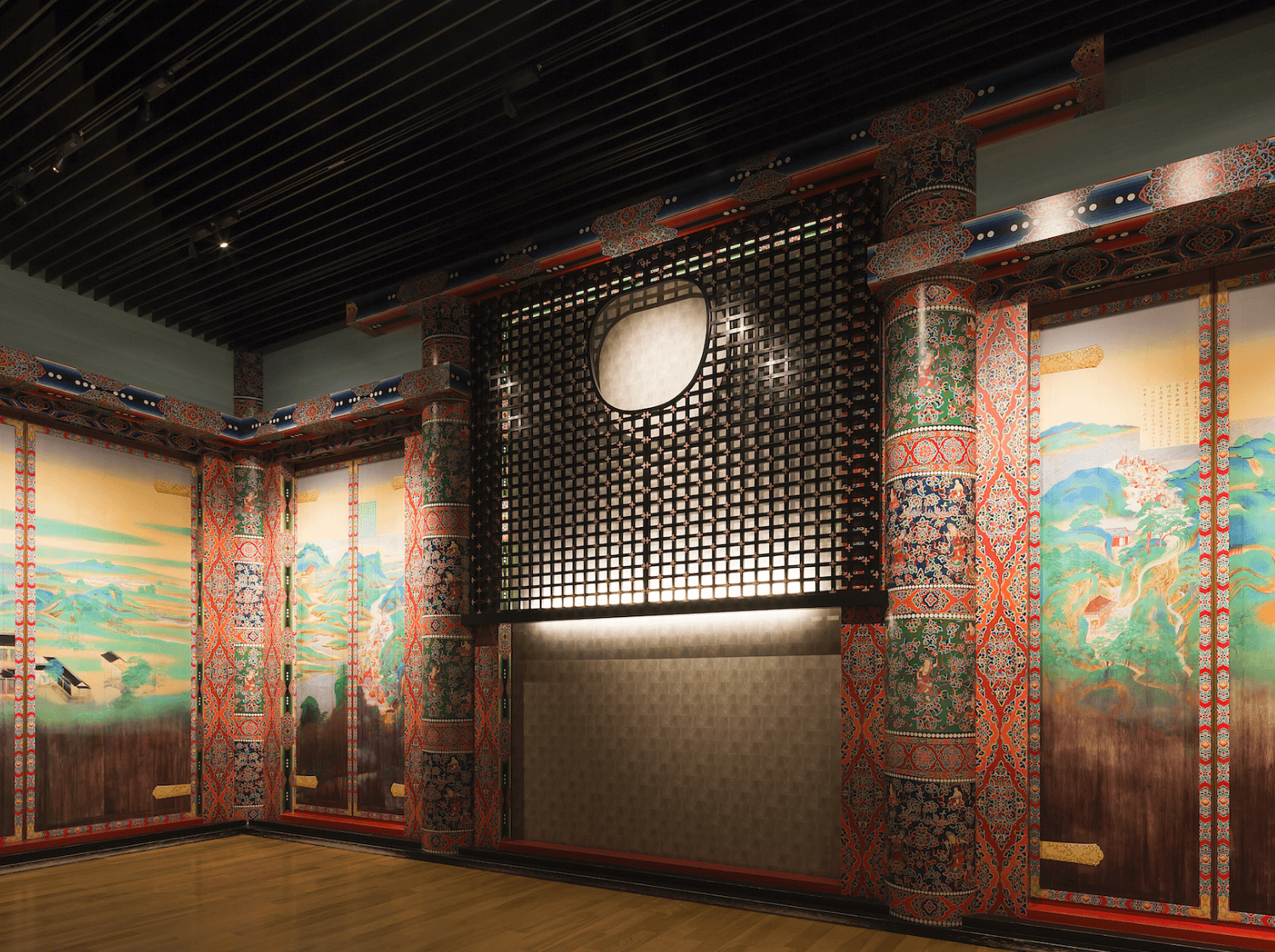Phoenix Hall Decorations and Door Paintings

The Phoenix Hall is richly adorned with decorations and paintings that represented the height of craftsmanship and artistic expression in eleventh-century Japan. In conjunction with the hall’s main image of Amida (Sk. Amitabha) Buddha, they present a vision of the Pure Land (Jodo) as understood by Japanese Buddhists during the Heian period (794–1185).
On the white wall panels behind and to the sides of Amida Buddha are 52 small sculptures of worshiping bodhisattvas floating on clouds. These figures are playing instruments, singing, dancing, and praying while welcoming the spirits of the dead into paradise. The doors and other wall panels are ornamented with paintings depicting the descent of Amida Buddha from paradise to welcome the dead (kuhon raiko-zu). Divided into four seasons, they include deer and crimson leaves representing autumn, and cherry blossoms for spring. Listed as National Treasures, these artworks are the oldest extant raiko paintings in the Yamato-e painting style that flourished in the Heian period. The style features scenes of nature inspired by the landscape around Kyoto.
The hall was originally embellished with floral motifs throughout the interior. These motifs were all beautifully illuminated by mother-of-pearl inlay. The ceiling has 66 bronze mirrors that reflect sunlight and transform the hall into a luminous, kaleidoscopic representation of heaven on earth.
The decorations and original colors of the Phoenix Hall, including the walls, ceiling, pillars, and beams, have been re-created using computer graphics. The video is shown in the entrance space of the museum. The reconstructions show that the original images were all depicted in gorgeous and vivid colors. While the colors of the hall itself have faded over the centuries, the Byodoin Museum Hoshokan houses a full-scale reproduction of the eastern portion of the hall as it would have appeared after its completion in 1053, when its colors were at their most vivid.

